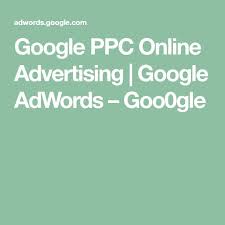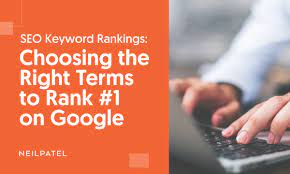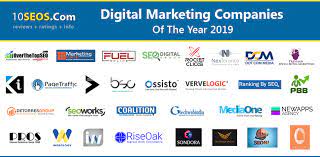Google PPC Online Advertising: Boost Your Business with Targeted Ads
In today’s digital age, online advertising has become an essential tool for businesses to reach their target audience. Among the various online advertising platforms available, Google PPC (Pay-Per-Click) advertising stands out as a powerful and effective way to drive traffic and generate leads. In this article, we will explore the benefits and strategies behind Google PPC online advertising.
What is Google PPC Advertising?
Google PPC advertising is an online marketing model where advertisers pay a fee each time their ad is clicked on by a user. These ads are displayed on Google’s search engine results pages (SERPs), as well as on websites and mobile apps that are part of Google’s extensive ad network.
Benefits of Google PPC Advertising:
Targeted Reach: One of the greatest advantages of Google PPC advertising is its ability to target specific keywords and demographics. By choosing relevant keywords related to your business or industry, you can ensure that your ads are shown to users who are actively searching for products or services like yours. This targeted approach increases the likelihood of attracting qualified leads.
Cost Control: With Google PPC advertising, you have complete control over your budget. You can set a daily or monthly spending limit, ensuring that you don’t exceed your allocated budget. Additionally, you only pay when someone clicks on your ad, which means you’re not wasting money on impressions that don’t result in engagement.
Measurable Results: Unlike traditional forms of advertising, Google PPC provides detailed analytics and performance metrics that allow you to measure the success of your campaigns accurately. You can track impressions, clicks, conversions, and other key metrics in real-time, enabling you to make data-driven decisions and optimize your campaigns for better results.
Quick Results: Unlike organic search engine optimization (SEO), which can take time to yield results, Google PPC advertising offers immediate visibility. Once your campaign is live, your ads will start appearing on relevant search engine results pages, driving targeted traffic to your website right away.
Strategies for Successful Google PPC Advertising:
Keyword Research: Conduct thorough keyword research to identify the most relevant and high-performing keywords for your business. Use tools like Google Keyword Planner to discover keywords with high search volumes and low competition. By targeting the right keywords, you can increase the chances of reaching potential customers.
Compelling Ad Copy: Craft compelling and concise ad copy that entices users to click on your ads. Highlight unique selling points, promotions, or special offers to grab their attention. Ensure that your ad copy aligns with the landing page it directs users to, providing a seamless user experience.
Landing Page Optimization: Create dedicated landing pages that are optimized for conversion. Make sure they are visually appealing, easy to navigate, and provide relevant information that matches what users expect from clicking on your ad. A well-designed landing page can significantly improve your conversion rates.
Continuous Monitoring and Optimization: Regularly monitor the performance of your Google PPC campaigns and make necessary adjustments based on data insights. Test different ad variations, adjust bids, and refine targeting parameters to improve campaign performance over time.
Conclusion:
Google PPC online advertising offers businesses a highly targeted and cost-effective way to reach their desired audience in a competitive digital landscape. With its ability to drive immediate results, measurable success metrics, and flexibility in budget control, Google PPC advertising has become an indispensable tool for businesses seeking online visibility and growth.
By investing time in research, strategic planning, and continuous optimization of your campaigns, you can harness the power of Google PPC advertising to boost your business’s online presence and drive qualified leads towards conversion. Embrace this powerful marketing tool today and watch as it propels your business towards success in the digital realm.
6 Frequently Asked Questions about Google PPC Online Advertising
- How much does Google PPC cost?
- What is the best way to optimize my Google PPC campaign?
- How do I set up a Google PPC ad?
- What are the benefits of using Google PPC?
- What types of keywords should I use for my Google PPC campaign?
- How can I track and measure the success of my Google PPC ads?
How much does Google PPC cost?
The cost of Google PPC advertising can vary depending on several factors, including the competitiveness of your industry, the keywords you target, and the quality of your ads. Google PPC operates on an auction-based system, where advertisers bid for ad placement on relevant search engine results pages.
When setting up a Google PPC campaign, you have control over your budget. You can set a daily or monthly spending limit to ensure that you don’t exceed your allocated budget. Additionally, you only pay when someone clicks on your ad, which means you’re not charged for impressions that don’t result in engagement.
The cost per click (CPC) can range from a few cents to several dollars or more, depending on the factors mentioned earlier. It’s important to note that popular and highly competitive keywords tend to have higher CPCs. However, with effective keyword research and optimization strategies, it is possible to achieve good results within a reasonable budget.
To get a better understanding of potential costs for your specific industry and target audience, it’s recommended to use Google’s Keyword Planner tool or consult with a digital marketing professional who specializes in PPC advertising. They can provide insights into estimated costs and help you optimize your campaigns for maximum return on investment (ROI).
What is the best way to optimize my Google PPC campaign?
Optimizing your Google PPC campaign is crucial for maximizing its effectiveness and achieving better results. Here are some key strategies to help you optimize your campaign:
- Keyword Research: Continuously refine and expand your keyword list. Identify high-performing keywords that are relevant to your business and have a good search volume. Use tools like Google Keyword Planner or third-party keyword research tools to discover new keyword opportunities.
- Negative Keywords: Regularly review your search term reports to identify irrelevant or low-converting search terms that trigger your ads. Add these as negative keywords to prevent wasted spend on irrelevant clicks.
- Ad Copy Testing: Experiment with different ad variations to determine which ones perform best. Test different headlines, descriptions, calls-to-action, and display URLs to find the most compelling combination that drives higher click-through rates (CTRs) and conversions.
- Landing Page Optimization: Ensure that your landing pages align with the ad copy and provide a seamless user experience. Optimize landing page elements such as headlines, content, forms, and calls-to-action to improve conversion rates. Conduct A/B testing to identify the most effective layout and messaging.
- Ad Extensions: Take advantage of ad extensions like sitelink extensions, call extensions, location extensions, and more. These extensions provide additional information or options for users to engage with your ads, increasing visibility and click-through rates.
- Bid Management: Regularly monitor and adjust your bids based on performance data. Increase bids for high-converting keywords or locations while reducing bids for underperforming ones. Use bid modifiers for device types, locations, or demographics to optimize bidding strategies further.
- Quality Score Improvement: Improve your Quality Score by ensuring relevant keywords, compelling ad copy, and optimized landing pages aligned with user intent. Higher Quality Scores can lead to lower costs per click (CPC) while improving ad positions.
- Conversion Tracking: Implement conversion tracking on your website to measure the effectiveness of your campaigns. Track key actions such as form submissions, purchases, or phone calls to evaluate campaign performance accurately. Use this data to make informed optimization decisions.
- Regular Monitoring and Analysis: Continuously monitor campaign performance, including impressions, clicks, CTRs, conversion rates, and cost per conversion. Identify trends, patterns, or areas of improvement and make necessary adjustments accordingly.
- Testing and Experimentation: Don’t be afraid to try new strategies or features within Google Ads. Test different campaign settings, ad formats, targeting options, or bidding strategies to discover what works best for your business.
Remember that optimization is an ongoing process. Regularly review and refine your campaigns based on data insights and industry trends. By continuously optimizing your Google PPC campaign, you can drive better results and achieve a higher return on investment (ROI).
How do I set up a Google PPC ad?
Setting up a Google PPC ad campaign may seem daunting at first, but with the right steps, you can get your ads up and running in no time. Here’s a simplified guide to help you get started:
- Create a Google Ads Account: Visit the Google Ads website (ads.google.com) and click on “Start Now.” Follow the prompts to create your account. If you already have a Google account, you can sign in using those credentials.
- Define Your Campaign Goals: Determine your advertising objectives. Are you looking to drive website traffic, generate leads, increase sales, or raise brand awareness? Clearly defining your goals will help structure your campaign effectively.
- Set Up Your Campaign: Click on the “+ Campaign” button in your Google Ads dashboard and select the campaign type that aligns with your objectives (e.g., Search Network, Display Network, Shopping, etc.). Each campaign type has its own settings and targeting options.
- Choose Your Target Audience: Identify the audience you want to reach with your ads. You can target based on location, language, demographics, interests, and more. Refine your targeting to ensure that your ads are shown to the most relevant audience for better results.
- Select Relevant Keywords: Research and choose keywords that are relevant to your business and are likely to be used by people searching for products or services like yours. Use tools like Google Keyword Planner or other keyword research tools to find popular keywords with reasonable competition levels.
- Create Compelling Ad Copy: Craft engaging ad copy that includes relevant keywords and highlights unique selling points or offers. Ensure that your ad copy is concise yet compelling enough to entice users to click on your ads.
- Set Your Budget: Determine how much you’re willing to spend on your ads daily or monthly. Set a budget that aligns with your overall marketing goals and financial capabilities.
- Optimize Landing Pages: Create dedicated landing pages that align with your ad copy and provide a seamless user experience. Ensure that the landing pages are optimized for conversions, load quickly, and provide relevant information to visitors.
- Monitor and Refine: Regularly monitor the performance of your ads and make necessary adjustments based on the data you receive. Experiment with different ad variations, adjust bids, and refine targeting parameters to improve campaign performance over time.
- Track Conversions: Set up conversion tracking to measure the success of your campaigns accurately. This will help you understand which ads are generating actual results such as purchases, form submissions, or other desired actions.
Remember, Google Ads provides extensive documentation and resources to help you navigate through the setup process. Take advantage of their support materials, tutorials, and best practices to optimize your campaigns effectively.
What are the benefits of using Google PPC?
Using Google PPC (Pay-Per-Click) advertising offers several benefits for businesses looking to enhance their online presence and drive targeted traffic. Here are some key advantages:
- Targeted Reach: Google PPC allows you to target specific keywords, demographics, locations, and even devices. This precision targeting ensures that your ads are shown to users who are actively searching for products or services like yours. By reaching the right audience, you increase the chances of attracting qualified leads.
- Cost Control: With Google PPC, you have complete control over your budget. You can set a daily or monthly spending limit, ensuring that you don’t exceed your allocated advertising budget. Additionally, you only pay when someone clicks on your ad (hence the name “Pay-Per-Click”), which means you’re not wasting money on impressions that don’t result in engagement.
- Measurable Results: Unlike traditional forms of advertising, Google PPC provides detailed analytics and performance metrics that allow you to measure the success of your campaigns accurately. You can track impressions, clicks, conversions, click-through rates (CTRs), and other key metrics in real-time. These insights enable you to make data-driven decisions and optimize your campaigns for better results.
- Quick Results: While organic search engine optimization (SEO) efforts can take time to yield results, Google PPC advertising offers immediate visibility. Once your campaign is live and approved, your ads will start appearing on relevant search engine results pages (SERPs), driving targeted traffic to your website right away.
- Flexibility and Customization: Google PPC allows you to customize your ads based on specific goals or promotions. You can create different ad variations with unique messaging or calls-to-action to test what resonates best with your audience. This flexibility enables you to refine and optimize your campaigns for maximum impact.
- Brand Exposure: Even if users don’t click on your ads, they still see them on the search results page. This exposure helps build brand awareness and familiarity with your business. When users repeatedly see your ads, it can increase the likelihood of them engaging with your brand in the future, even through other channels.
- Competitive Advantage: Google PPC advertising allows businesses of all sizes to compete on an equal playing field. Whether you’re a small startup or a large corporation, you can bid on relevant keywords and appear alongside larger competitors in search results. This levels the playing field and gives you an opportunity to gain visibility and attract customers.
In summary, Google PPC advertising offers targeted reach, cost control, measurable results, quick visibility, flexibility, brand exposure, and a competitive advantage. By leveraging these benefits effectively, businesses can enhance their online marketing efforts and drive qualified traffic to their websites or landing pages.
What types of keywords should I use for my Google PPC campaign?
When selecting keywords for your Google PPC campaign, it’s important to choose a mix of relevant and targeted keywords that align with your business goals. Here are a few types of keywords you should consider:
- Broad Match Keywords: These are general keywords that are related to your products or services. They have a wider reach and can help you capture a larger audience. For example, if you sell running shoes, a broad match keyword could be “athletic footwear.”
- Phrase Match Keywords: These keywords are more specific than broad match keywords and target users who search for phrases that include your chosen keyword. For instance, using the example above, a phrase match keyword could be “best running shoes for marathon.”
- Exact Match Keywords: These keywords are highly specific and target users who search for an exact term or phrase. They usually have higher conversion rates but may have lower search volumes. For example, an exact match keyword could be “Nike Air Zoom Pegasus 37.”
- Long-Tail Keywords: These are longer and more specific phrases that typically have lower search volumes but higher intent from users who search for them. Long-tail keywords can help you target niche audiences and improve conversion rates. For instance, “affordable women’s running shoes with arch support.”
- Negative Keywords: It’s equally important to consider negative keywords – terms or phrases that you don’t want your ads to appear for. This helps refine your targeting and prevents irrelevant clicks that can waste your budget.
To choose the right mix of keywords, consider conducting thorough keyword research using tools like Google Keyword Planner or other third-party keyword research tools. Look for high-search-volume keywords that align with your business objectives while also considering the level of competition and relevance.
Remember to regularly monitor the performance of your chosen keywords and make adjustments as needed based on data insights to optimize your campaign over time.
How can I track and measure the success of my Google PPC ads?
Tracking and measuring the success of your Google PPC ads is essential to understand the effectiveness of your campaigns and make data-driven decisions for optimization. Here are some key methods and metrics to track:
- Conversion Tracking: Set up conversion tracking in your Google Ads account. This allows you to track specific actions that users take on your website, such as purchases, form submissions, or newsletter sign-ups. By tracking conversions, you can measure the direct impact of your PPC ads on driving desired actions.
- Click-Through Rate (CTR): CTR measures the percentage of users who click on your ad after seeing it. A higher CTR indicates that your ad is compelling and relevant to users’ search queries. Monitor the CTR regularly to gauge how well your ads resonate with your target audience.
- Quality Score: Google assigns a Quality Score to each keyword in your campaign, which reflects the relevance and quality of your ads, landing pages, and user experience. A higher Quality Score can lead to lower costs per click (CPC) and better ad positions. Monitor and optimize your keywords’ Quality Scores to improve overall campaign performance.
- Cost Per Click (CPC): CPC measures the average amount you pay for each click on your ad. Tracking CPC helps you understand how much you’re spending for user engagement. By analyzing CPC trends over time, you can adjust bidding strategies and allocate budgets effectively.
- Return on Ad Spend (ROAS): ROAS calculates the revenue generated from your PPC ads compared to the amount spent on advertising. It helps determine if your campaigns are profitable or if adjustments are needed. Calculate ROAS by dividing revenue by ad spend and aim for a positive return.
- Conversion Rate: Conversion rate measures the percentage of visitors who complete a desired action after clicking on an ad (e.g., making a purchase). A higher conversion rate indicates that your landing page and overall user experience are effectively driving conversions. Monitor and optimize your landing pages to improve conversion rates.
- Ad Position: Ad position refers to where your ads appear on the search engine results page (SERP). Higher ad positions typically result in more visibility and clicks. Monitor your ad positions to ensure you’re maintaining a competitive position relative to your goals and industry benchmarks.
- Geographic and Demographic Data: Google Ads provides insights into the geographic locations and demographics of users who interact with your ads. Analyzing this data can help you refine targeting strategies, tailor ad messaging, and allocate resources effectively.
By regularly tracking these metrics within your Google Ads account, you can gain valuable insights into the performance of your PPC campaigns. Use these insights to make informed optimizations, refine targeting, improve ad copy, and maximize the return on your advertising investment.




